

Designed by Paul Smith 2006. This website is copyrighted by law. Material contained herewith may not be used without the prior written permission of FAUNA Paraguay. Photographs on this web-site were taken by Paul Smith, Hemme Batjes, Regis Nossent,
Alberto Esquivel, Arne Lesterhuis, José Luis Cartes, Rebecca Zarza and Hugo del Castillo and are used with their permission.
Catonephele numilia neogermanica (Stichel 1899)
TAX: This taxon is sometimes called Catonephele numilia penthia (Hewitson).
ENG: Stoplight Catone, Spotted Velvet, Orangespots
ESP: Terciopelo manchado
JIZ: Forewings long with steeply curved costa and square-ended apex. Outer margin of forewing with conspicuous "bite-mark" and rounded tornus. Hindwing rounded with slightly undulated outer margin. Poses with wings flat in exposed sunny areas or with wings closed in shady areas. When posing with open wings the forewings are held backwards so that the part of the costa closest to the body is perpendicular to it and the apices are positioned well behind the head, the "bite-marks" being "hidden" against the hindwing. Attracted to dung, rotting fruit and enriched muddy surfaces. Can be approachable. Sexually dimorphic, females polymorphic. FLI: Rapid and purposeful within 1m of the ground, but posing suddenly.
UPP: M (Fig 1-3) Forewing black with two large orange blotches, one located postmedially and the other towards the apex of the wing. Hindwing similarly black with a single large orange blotch, forming a line with the blotches of the forewing in the typical open-wing pose. Outer margin of hindwing bordered with small deep blue spots, conspicuous in bright light but hard to see from certain angles. F typical form (no image) Forewing mostly black with broad yellow-white postmedial band and pair of small, indistinct subapical spots. Outer margin of both wings bordered by submarginal line of yellow dashes. On hindwing first yellow dash on adroconium is larger, more conspicuous and slightly triangular. Rest of hindwing blackish. F fulva form (Fig 4) As typical form but with extensive reddish blush on basal and medial bindwing, broken on the posterior edge by a row of small black "teardrops" bordered with red.
UND: M (Fig 1&5) Underside of forewing orange basally with broad black postmedial band, usually hidden when at rest. Apical section, the only part usually visible over the hindwing when at rest is cryptically-coloured as the hindwing. Underside of hindwing cryptic, pale brownish with a slightly greyish wash, imitating a dead leaf. Indistinct postmedial band with slightly lilac tone, thinly bordered paler. Slightly darker brown towards outer margin. F (no image) No information.
BOD: M Antennae black. Whole upperside of body black. Underside of abdomen orange-yellow. Legs dark brown. Eyes black. F No information.
MMT: A large Biblid. No information available from Paraguay. Canals (2003) gives a CL of 32-36mm.
SSP: Male is relatively unmistakeable, the only mostly black butterfly with conspicuous large orange blotches. Females are more likely to be confused, the fulva form bearing a superficial resemblance to certain species of Parides in the family Papilionidae. Note however the completely different jizz (no tail, "hooked" forewing, does not hover etc.). The habit of posing open-winged with the apices held well behind the head helps diagnose the species.
ABU: Uncommon to frequent in suitable habitat.
HAB: Associated with humid forest edge and clearings.
HOS: Plants in the family Lauraceae such as Nectandra, Euphorbiaceae such as Alchornea and Verbenaceae including Citharexylum. (Canals 2003).
Citable Reference: Smith P (2007) FAUNA Paraguay Online Handbook of Paraguayan Fauna Butterfly Species Account 24 Catonephele numilia
Last Updated: 12 April 2008.
References:
Canals G 2003 Mariposas de Misiones - LOLA, Buenos Aires.
ECOSARA Biodiversity Database
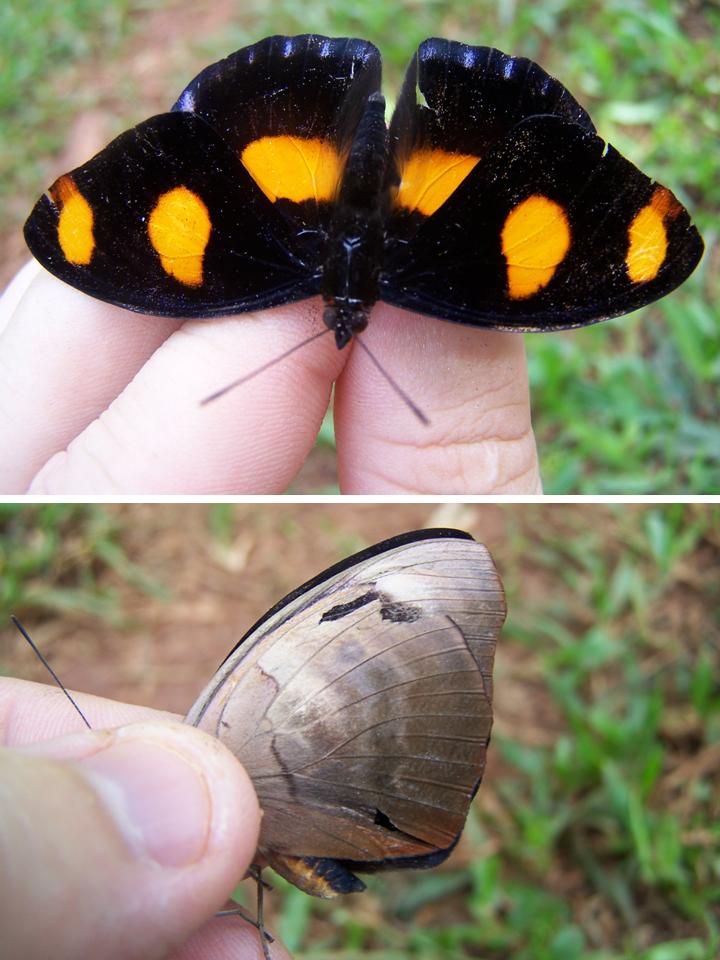 | FIGURE 1 |
|
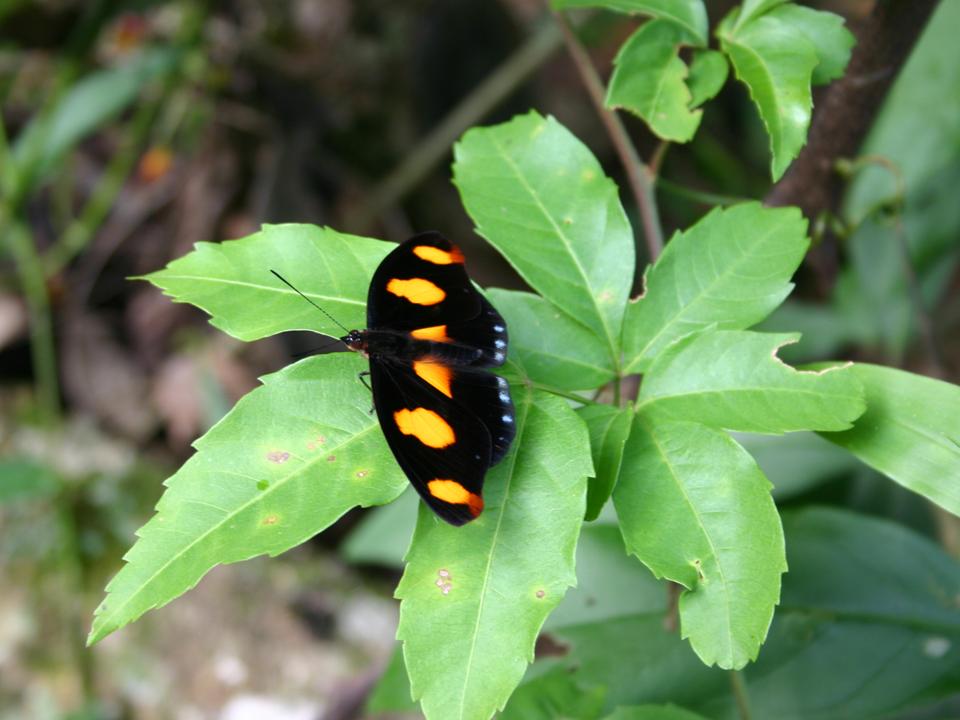 | FIGURE 2 |
|
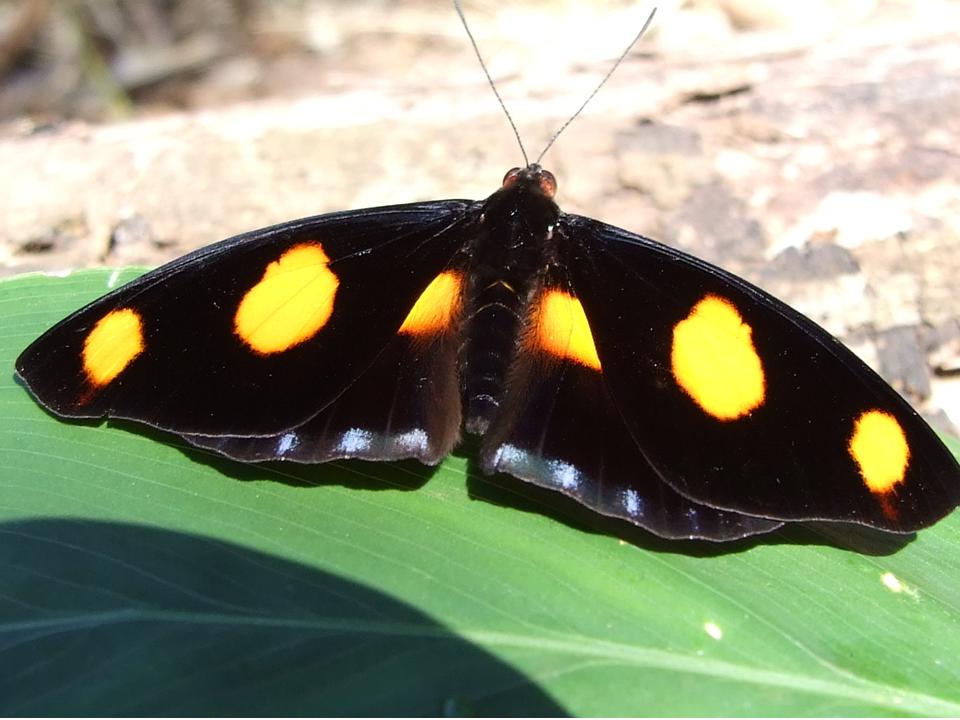 | FIGURE 3 |
|
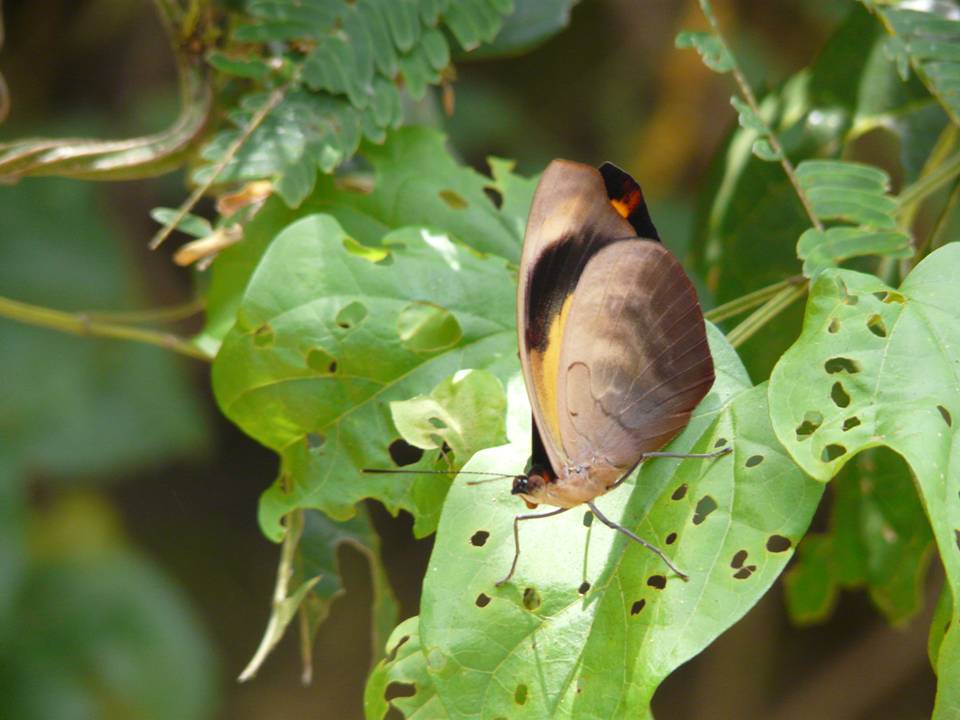 | FIGURE 4 |
|
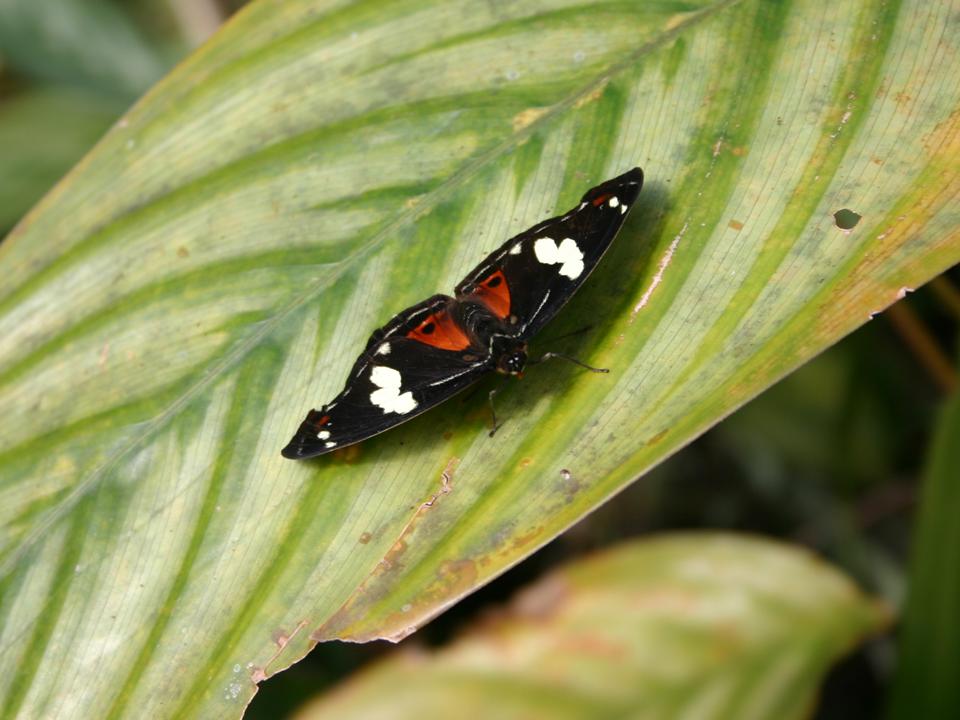 | FIGURE 5 |
|
FIGURES 1 - PROCOSARA, PN San Rafael (Paul Smith March 07 - ECOSARA Biodiversity Database); 2 - Hotel Tirol, Departamento Itapúa (Regis Nossent June 05); 3 PROCOSARA, PN San Rafael (Alberto Esquivel 8 December 07 - ECOSARA Biodiversity Database); 4 - PROCOSARA, PN San Rafael (David Gill 29 March 07 - ECOSARA Biodiversity Database); 5 - Hotel Tirol, Departamento Itapúa (Regis Nossent June 05).

